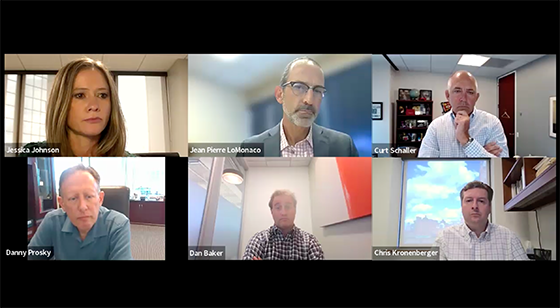Increased interest rates have made the cost of capital high, slowing both acquisitions and new development in the seniors housing space.
“Since interest rates took the bubbles out of our champagne in 2022, many in our industry have been hunkering down as valuations have been challenged, exit plans have been destroyed and carrying costs of non-cash-flowing properties have spiked,” said JP LoMonaco, executive vice president at CBRE.
But for those able to make acquisitions work, now may be the perfect time to buy.
“We’re past the COVID recovery now,” said Danny Prosky, president and CEO of American Healthcare REIT (NYSE: AHR). “There is an imbalance between supply and demand. We’ve got a lot of demand with the baby boomers now approaching 80 following a six-year period with a big drop-off in new construction starts.
“It’s really been good times for us,” concluded Prosky. “As a REIT, our leverage is fairly low. We don’t rely on debt to grow. We’ve paid off the majority of our floating-rate debt.”
Prosky’s comments came during a webinar titled “Meet Seniors Housing’s Contrarians — A Handful of Investors Go Big in a Challenging Environment.” LoMonaco moderated the discussion, which CBRE sponsored. Other panelists included Jessica Johnson, senior vice president, healthcare banking, BOK Financial; Curt Schaller, co-founder and principal, Focus Healthcare Partners; Dan Baker, director, capital markets, JLL; and Chris Kronenberger, managing director of acquisitions, Blue Moon Capital Partners.
Schaller noted that Focus did pause acquisitions in 2023 as sellers came to terms with the reduced property values caused by the high interest rates. This year the company was able to make a comeback on the acquisitions front.
“We were being extremely selective, seeing there was a wide bid-ask gap out there in the market,” said Schaller. “Things are coming together now. We’re extremely active. The timing is perfect. The pipeline is as robust as it’s ever been.”
Kronenberger said the fundamentals in seniors housing right now are simply too good to ignore.
“We think there’s a lot of opportunity when we look at the short to medium term, over the next three to five years. There are a lot of tailwinds. You see the increasing demographics. We all know the supply/demand characteristics, given the lack of new construction. This is a great time to be investing. We’re fully bullish on that.”
From a capital provider’s perspective, Johnson said that the lending environment has changed, but is still active. Buyers can still get financing.
“We have a very successful last couple of years for deal closings. The way we underwrite those transactions looks different now than it did a couple of years ago. Previously, your constraining factor was leverage. Cash flow wise, everything worked, because interest rates were virtually zero at that point. Today, debt-service coverage is the name of the game, and that’s what we size our loans to from the very outset.”
Baker noted that, as a buyer, the metrics are also different today than they were two years ago. Because of the high rates and the recent occupancy struggles due to the pandemic, investors consider a property’s value based on existing cash flow, not the promise of the future, he said.
“Investors have widely shifted toward more of an in-place or trailing cap rate evaluation as they’re looking at deals. That marks a pretty significant departure from the way deals were underwritten two years ago to now.
“Another thing that’s changed is the cost of construction has continued to climb with not much relief in sight,” continued Baker. “We find more developers are focusing on acquisitions just because that delta [between replacement cost and acquisition cost] is too big to ignore.”
To view the full webinar, click here.
— Jeff Shaw

